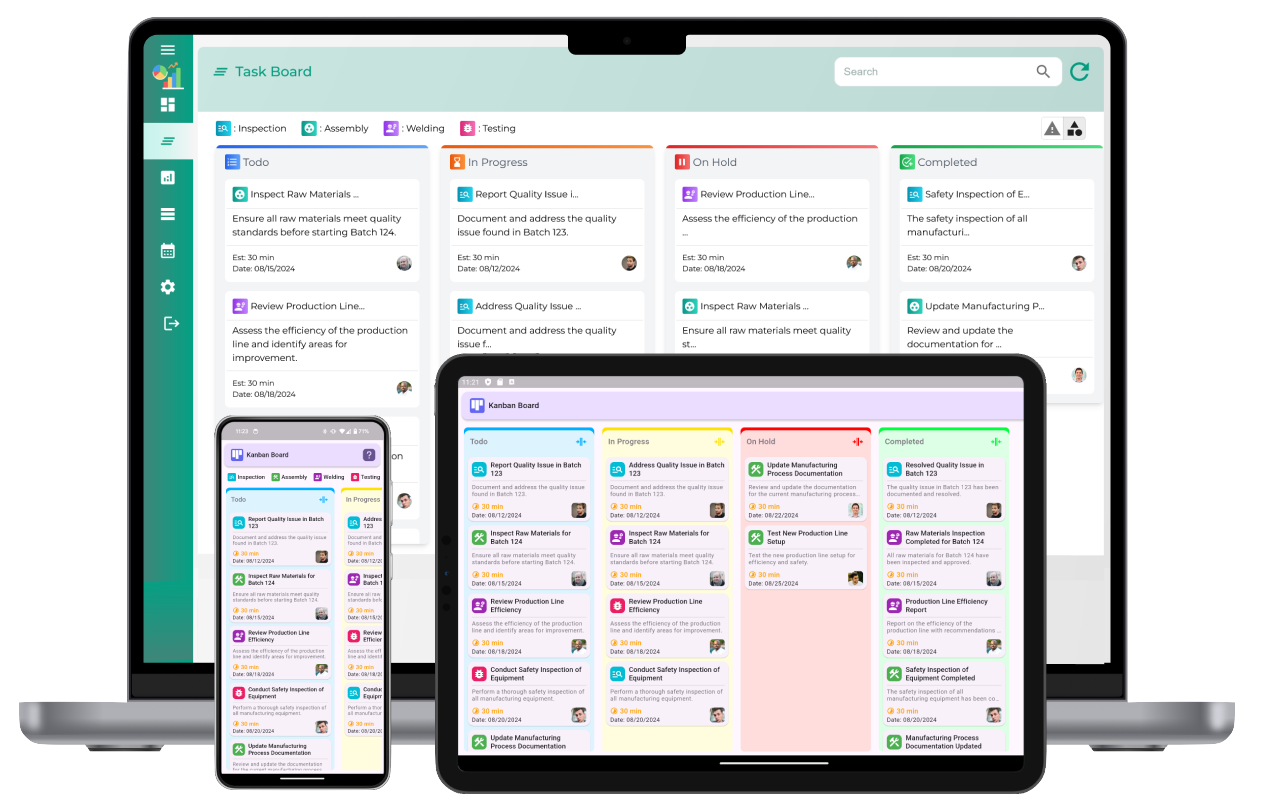In today's rapidly evolving business landscape, efficient project management is critical for success. Traditional project tracking methods, often involving manual updates and fragmented tools, can hinder productivity and lead to inefficiencies. Digital Kanban boards offer a modern solution for real-time project tracking, enabling teams to manage tasks dynamically, improve collaboration, and enhance overall project efficiency.

Understanding Digital Kanban Boards
Digital kanban boards are an electronic version of the traditional Kanban method, which originated from lean manufacturing practices. Kanban boards use visual cards to represent tasks and are organized into columns that represent different stages of a workflow. Digital Kanban boards replicate this visual approach in a digital format, providing a flexible and interactive platform for managing projects.
Key Features of Digital kanban boards:
- Visual Task Management: Digital boards display tasks as cards that can be moved between columns to represent different workflow stages.
- Real-Time Updates: Changes to task statuses, comments, and other details are updated in real-time, ensuring that all team members have access to the latest information.
- Collaboration Tools: Features such as comments, attachments, and notifications facilitate communication and coordination among team members.
- Customization: Boards can be customized to fit specific project needs, including the number and names of columns, card types, and workflow rules.
- Integration: Integration with other tools, such as project management software, communication platforms, and time-tracking systems, enhances functionality and streamlines workflows.
- Reporting and Analytics: Advanced reporting tools provide insights into project progress, team performance, and workflow efficiency.
Benefits of Real-Time Project Tracking with Digital kanban boards
1. Enhanced Visualization and Clarity
Digital Kanban boards offer a clear and visual representation of project tasks and workflow stages. This visual approach helps team members quickly understand the status of various tasks, identify bottlenecks, and assess overall project progress. Unlike traditional methods that may rely on spreadsheets or status reports, digital Kanban boards provide an intuitive and easily accessible overview of the project.
2. Improved Team Collaboration
Real-time updates on digital Kanban boards foster better collaboration among team members. As tasks are updated or moved between columns, all team members see the changes immediately. This transparency ensures that everyone is on the same page and can contribute to discussions or adjustments as needed. Collaboration tools, such as comments and attachments, further enhance communication and enable teams to work together more effectively.
3. Increased Flexibility and Adaptability
Digital Kanban boards offer flexibility in managing projects by allowing teams to customize boards according to their specific needs. Columns can be added or rearranged to reflect different workflow stages, and card types can be tailored to represent various task attributes. This adaptability makes digital Kanban boards suitable for a wide range of project types and workflows, from simple task management to complex project tracking.
4. Efficient Workflow Management
With digital Kanban boards, tasks are visually organized into columns representing different stages of the workflow. This setup helps teams manage tasks more efficiently by providing a clear view of what needs to be done, what is in progress, and what has been completed. Automated features, such as reminders and due date notifications, further streamline task management and ensure that deadlines are met.
5. Data-Driven Insights
Digital Kanban boards come with reporting and analytics tools that provide valuable insights into project performance. Customizable reports and dashboards allow teams to track key metrics, such as task completion rates, project timelines, and team productivity. These insights help identify trends, measure progress, and make informed decisions to improve project management processes.
Implementing Digital kanban boards
1. Define Project Requirements
Before implementing a digital Kanban board, define the specific requirements of your project. Identify the key stages of your workflow, the types of tasks you need to manage, and any special requirements or preferences your team may have. This information will help you choose and customize a digital Kanban board that aligns with your project needs.
2. Customize Your Board
Customize your digital Kanban board to reflect your project’s workflow and requirements. Set up columns to represent different stages of the workflow, define card types and attributes, and configure any automation features or integrations. Tailor the board to fit your team’s specific needs and preferences.
3. Monitor and Adjust
After implementation, monitor the use of the digital Kanban board and gather feedback from team members. Analyze project data and performance metrics to assess the board’s impact on workflow efficiency and project management. Make adjustments as needed to address any issues or improve the board’s functionality.
Conclusion
Digital kanban boards revolutionize project tracking by offering a visual, real-time approach to task management. With features like real-time updates, collaboration tools, and customizable workflows, digital Kanban boards enhance project visibility, team collaboration, and workflow efficiency. By carefully defining project requirements, customizing the board, and promoting best practices, you can leverage digital Kanban boards to achieve better project outcomes and drive success in your organization.